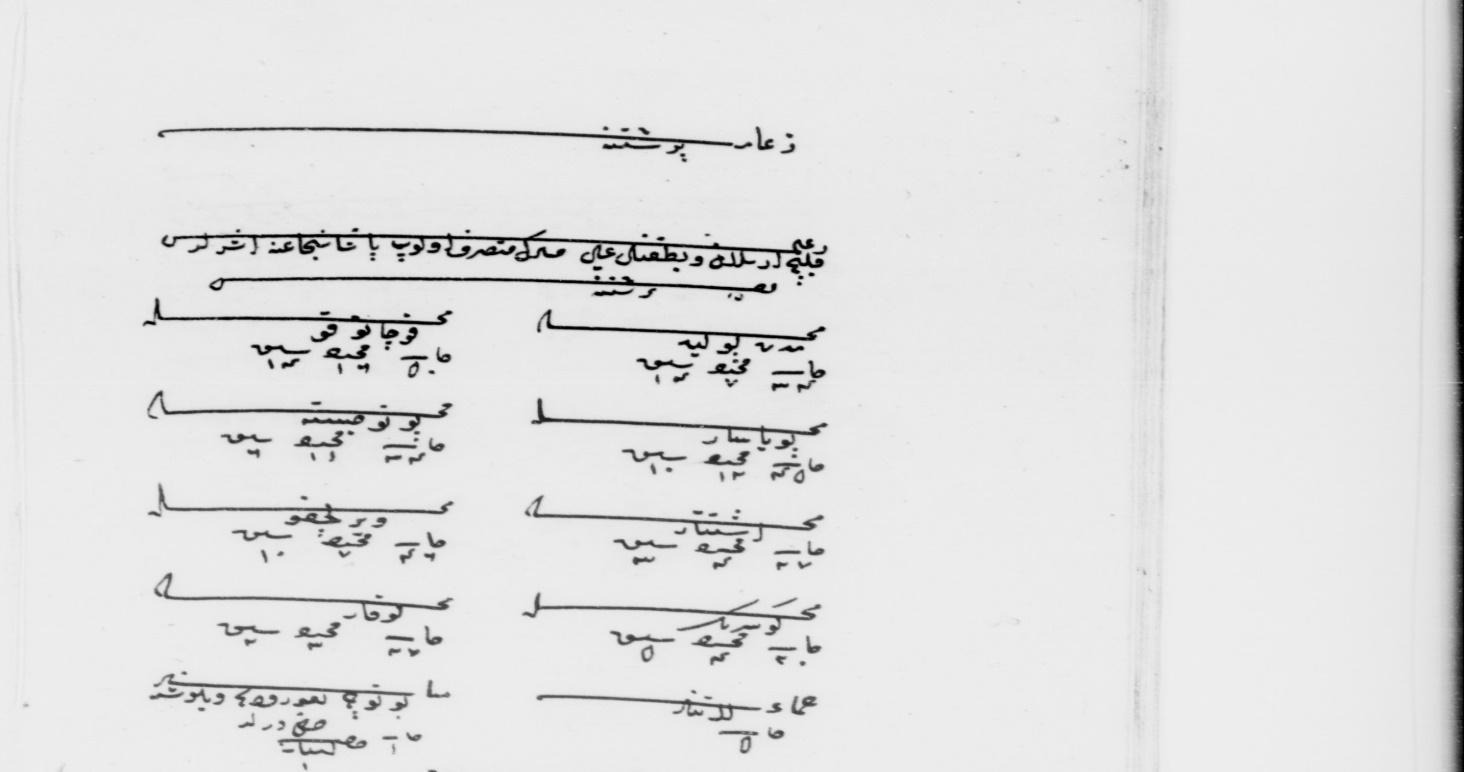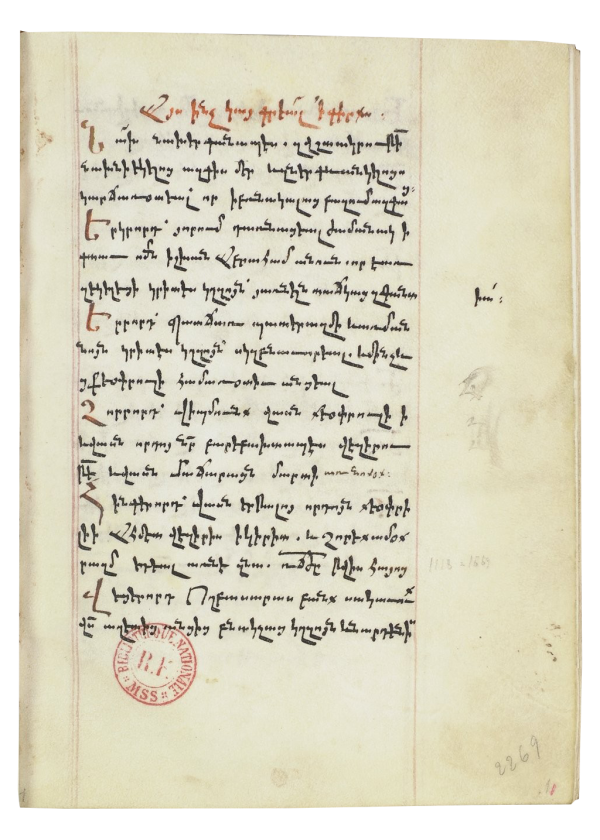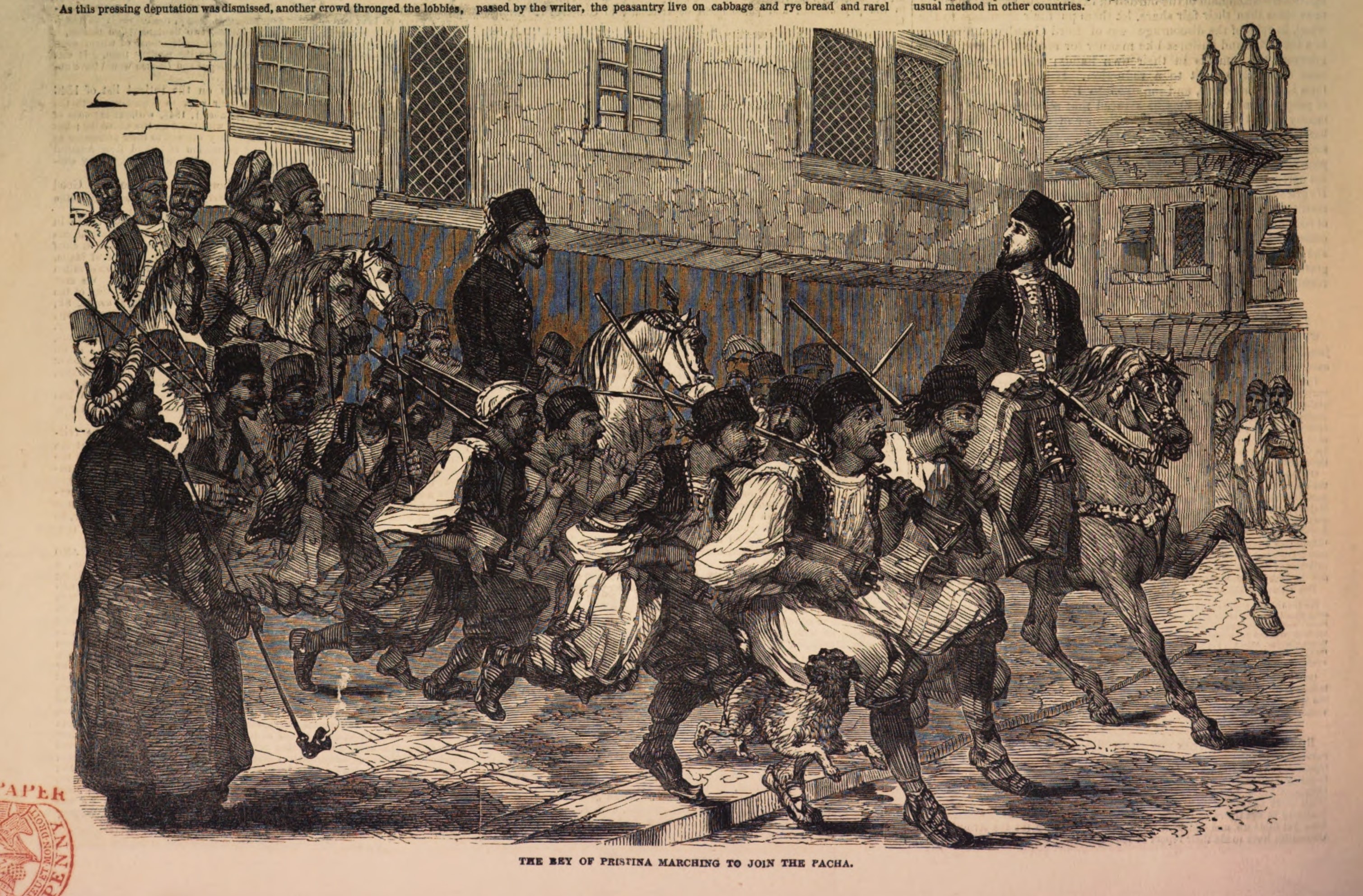The population of the kaza of Prishtina
Prishtina in the first Ottoman censuses of the 15th century, appears as a nahiye dependent on the sanjak of Vilçiterina.1 A bit later, in the census of 1530, done during the reign of Kanuni Sultan Suleimani (1520–1566), it is recorded as the kaza of this sanjak (Vilçiterina), which was formed by the nahija of Prishtina, Morava (the territory of Gjilan) and Llap.2 This rise of Prishtina to the rank of kaza, came as a result of the economic development of the city during the first two Ottoman centuries, which it also affected the increase in the number of the population.
Referring to the first Ottoman data, Prishtina during the year 1477 was formed by 8 non-Muslim neighborhoods consisting of 285 houses, as well as 5 houses of the 'Latin community' (Catholic), with a total of 290 houses.3 In the subsequent census of 1485, Prishtina has 264 non-Muslim houses and 10 houses of the Muslim community, totaling 274 houses. During the year 1525–1526 there were 121 Muslim houses and 262 non-Muslim houses, a total of 383 houses.4 In the years 1569–1570, there were 307 Muslim houses and 251 Christian houses, with a total of 558 houses.4 The data from the 17th and 18th centuries are reflected in the travelogues of various visitors, such as the case of Evlija Çelebi, who came to Prishtina during 1660. According to him, the city of Prishtina consisted of 2,060 one- and two-story houses built of stone.5 The city was deserted during the occupation by side of the army of the Holy League (1689–1690), as well as during the subsequent attacks of the Austrian armies during the years 1737–1739. The French consul in Thessaloniki, Felix Veaujour, writes that Prishtina during the late 18th century was an important center of the Ottoman administration and consisted of 7–8,000 houses.6 In the first modern census of the population of Prishtina in 1831, in the 12 neighborhoods of the city, 1,828 houses are registered. Respectively, the neighborhood of the Great Mosque had 146, Pirnazëri 83, Alaaddini 248, Mehmed beji 75, Hasan Emini 154, Jusuf Çelebiu 148, Jamia e Vogël 67, Jarar Çeribashi 121, Yunus Efendiu 255, Hasan Beji 129, Ramadanije 224 and Hatunije 178 house.7 While, according to another property census of the first half of the 19th century, Prishtina had 779 Muslim houses, 239 Christian houses and 122 houses from the Roma-Ashkali community known as Copts, 22 of them belonged to the Muslim faith and 59 to that Christians. 6 houses of the Jewish community (Yehud) were also registered.8
If we consider that a family during the Ottoman period consisted on average of 5 members, then the approximate number of inhabitants of Prishtina during the four Ottoman centuries was as follows:
Table 2.1. Population of Prishtina (1477–1874)
Approximate number of inhabitants
|||||||||| 1477 — 1,450
||||||||| 1485 — 1,370
||||||||||||||| 1525/1526 — 1,915
|||||||||||||||||||| 1569 — 2,790
|||||||||||||||||||||||||||||||||||||||||||||||||||||||||||| 1660 — 10,000
||||||||||||||||||||||||||||||||||||||||||||||||||||||||||||||||||||||||||| 1874 — 13,435
The 'mahallas' (neighborhoods) of Prishtina during the 15–20th century
The smallest administrative unit in the Ottoman city was the mehalla. As a result of this, the information on the presence of the mahallas in Pristina is already reflected in the first Ottoman records. According to these data, Prishtina in 1477 was formed by 9 villages inhabited by Christian residents. The same neighborhoods appeared in the two following censuses of 1487 and 1519. While, in the census of 1526, the first Muslim neighborhoods appeared, which continued to grow and this was the result of the increase in the number of local residents. who chose Islam as their religion. Thus, from 3 mahallas in the census of 1526, in the census of 1544 it more than doubled to 7, and in 1569 it had gone to 11 Muslim mahallas.
 Mahallas or Prishtina in the Ottoman defter of 1477.
Mahallas or Prishtina in the Ottoman defter of 1477.
Christian mahallas in 1477 and 1569
| 1477 | 1569 | ||
|---|---|---|---|
| Metropolit | 34 | Mitropolit | 8 |
| Kuçanoku | 50 | Kuçaniko | 63 |
| Pojasar | 45 | Pojasar | 33 |
| Potoçishte | 34 | Potoçishte | 29 |
| Ishtitar | 27 | Ishtitar | 34 |
| Virlaçka | 24 | Virlaçka | 39 |
| Kusrik | 20 | Kursik | 12 |
| Llukar | 27 | Llukar | 27 |
| Bashkësia latine | 5 | Bashkësia latine | 6 |
| Total | 266 | Total | 251 |
Muslim mahalls during the years 1526, 1569, 1831 and 1844 and the number of families:9
| Name of the neighbourhood | 1526 | 1569 | 1831 | 1844 |
|---|---|---|---|---|
| Sulltan Mehmet Han Gazi (Veteran) | 43 (x) | 44 (x) | 146 | 67 |
| Çarshisë | 40 (m) | 12 (m) | 67 | 27 |
| Sinan Bej Mirallaj | 27 (m) | 24 (m) | 121 | 38 |
| Hasan Bej | / | 30 (m) | 129 | 54 |
| Emin Alaaddini | / | 38 m) | 248 | 109 |
| Junus Kadiu | / | 34 (x) | 255 | 118 |
| Jusuf Çelebiu | / | 38 (m) | 148 | 70 |
| Hasan Emini | / | 16 (m) | 154 | 61 |
| Hatunije | / | 12 (m) | 178 | 79 |
| Ramadan Çaushi | / | 20 (m) | 224 | 92 |
| Mehmed Bej | / | 29 (m) | 75 | 29 |
| Pirnazëri | / | / | 83 | 35 |
x - mosque, m - mosque. In 1831 onwards, they all appear as mosques.
The neighborhood of Pirnazëri in 1831 had 83 families, while in 1844 there were 35 families. This district does not appear in the preliminary registrations.
-
1
BOA. TT. d. 09, page 1.
-
2
167 Numarali Muhâsebe-i Vilâyet-i Rum ili Defteri (937/1530) Vılçıtırın, Prizren, Alaca-Hisâr ve Hersek Livâları, , Ankara: Başbakanlık Devlet Arşivleri Genel Müdürlüğü Yayınları, 2004, fq. 1.
-
3
BOA. TD. MAD.16, p. 36.
-
4
BOA. TD.133, page 160–163.
-
5
KKA. TD. (Kuyûd-ı Kadime Arşivi Tahrir Defterleri) 124, page 160-167.
-
6
Z.O. Mehmed, Evliya Çelebi Seyahatnamesi, Istanbul:1969, 94-97.
-
7
Machiel Kiel, Prishtina, DIA, cilt. 34. Ankara: 2007, fq. 346-348.
-
8
BOA. NFS. d. 5730, p.1.
-
9
Arzu Terzi, “Priştina Şehri’nde Meslekler”, Balkanlar’da İslâm Medeniyeti: II. Milletlerarası Sempozyum Tebliğleri, Tiran, Arnavutluk, 4-7 Aralık 2003, p. 281-282.
Read the next article
Brief political history of Pristina during the years 1389-1912



